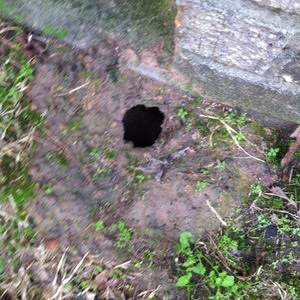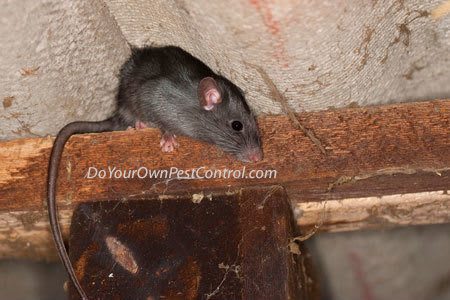
How to Poison Rats & Rat Bait Tips
How to Poison Rats Infesting Your Home
Rodenticides are commonly referred to as rat and mice baits. These rodent baits are pesticides that kill rodents (mice and rats). There are several types and forms of poison rat baits on the market. Single feed rodent baits only require one dosage for a lethal dosage instead of a multiple feed bait that requires several feedings to reach a toxic level.
Most of our recommended rat baits are single feed baits, which work well for persistent rats.
Types of Rodenticide Formulations
- Extruded blox baits (blocks)
- Pelleted baits (bulk and in place packs)
- Meal baits (bulk and in place packs)
- Liquid baits
- Soft Baits (pouches) The newest formulation on the market are "soft" baits found in pouches. Soft bait formulations often offer greater bait acceptance among the rodent population, and they do not mold.
See below for a quick summary.
How Rat Baits Kill Rats (Anticoagulants and Non-Anticoagulants)
Rodent baits are categorized into two categories: anticoagulants and non-anticoagulants. Some rodenticides disrupt the ability of the rodent's blood to clot (anticoagulants), and some interfere with the rat's nervous system or interfere with calcium levels in their blood (non-anticoagulant).
It is very helpful to use rat size bait stations to encourage feeding when placing out poison rat bait. Rat bait stations will also protect children and non-targeted animals from the poison in the rat baits.
In a rat baiting program, it is essential to eliminate as many competing food sources that serve as the rats' natural food sources. With fewer food sources, it is easier to introduce the new bait to the population.
Baiting Tips for Rats
- Place rat baits about 15 and 50 feet apart for rats (mice bait placements are much closer). For heavier rat infestations, set the rat bait closer to 15 feet measurement. Try to place rat bait near their harboring areas.
- After placement of rat bait stations, avoid moving them. Some rats react to moving objects. Of course, after a time, with the rats are not taking the bait, it would warrant moving the station.
- Since rats eat more rodent bait than mice, refill the bait stations more often. A rat can eat as much as 1 ounce or more nightly.
- In wet or damp conditions, use all-weather or weather-resistant blox/block or soft bait forms. If necessary, tie down the bait to prevent them from washing away to another area.
- Some of the general tips for baiting mice also apply to baiting techniques for rat control.
- Rats will tend to shy away from the Bromethalin products, such as Fastrac and Top Gun rodent baits, while the mice will readily accept it. The exception to this is a new soft bait called Take Down Soft Bait
Further Baiting Tips for Rats
- All the information above applies to Roof Rats and some additional tips because roof rats may be active above ground level. Always try to place baits between their harborage areas and all food sources.
- Roof rats do climb above ground. Look for areas as fence rails, attics, trees, rafters as possible bait areas. They should be tied securely so non targeted animals and children may not access them.
- Roof rats may travel a long distance to access food. Roof rats may live in trees and attics but travel to feed in garbage cans, pet dishes, etc. Remove competing for food sources.
- Inspect dense cover areas because roof rats like to rest and feed in these areas.
- These are areas that you will want to place your bait or traps.
- Roof rats like to feed on smaller amounts and various locations than the bigger sized Norway Rat.
- Provide more areas for feeding in baiting for Roof Rats.
- You can use PVC pipes(2 inches in diameter) as bait stations to bait on narrow ledges and overhead areas.
- Bait blocks should be wired, and the PVC pipe affixed to the areas.
Non-Toxic Rodent Bait (Biomarkers)
Non-Toxic Bait with Biomarkers are helpful as a monitoring bait. Detex Blox and Detex Soft Bait do not have a toxicant, and is helpful to monitor sensitive areas like schools, zoos, parks, or any other place where a non-toxic bait is desirable. With the use of a black light, rodent droppings are detected.
Bait Placements-Rodent Entry and Harborage Locations
Try to place rat bait near their harboring areas (areas of shelter). It is critical to place rat bait between their harborage locations and entry points. Rats only need a small opening ( about 5/8 inch) for entrance into the building. Look into possible entry points such as metal flashing around roof vents, laundry vents, crawl space vents, any ground-level vents. Look closely at the roof line and openings in roof tiles. Roof rats may climb up tree limbs to the roof.
See more tips at Rodent Inspection.

Typical Harborage Areas
Rats' natural harborages are by streams and fields as they feed on insects, birds, nuts, berries, and other natural sources. Closer to urban settings, rats have adapted very well around people. They need food, harborage, and water to survive.
Key Takeaway
Even if you have no pets or small children, it is a good idea to use bait stations. Studies show that rats and mice consume rodent baits more readily when they are placed in bait stations.

Norway Rats
Norway rats will prefer to harbor in burrows near areas of the food supply. But you can find them in and around homes. They also seek shelter basements, crawl spaces, and wall voids.
- These rats have been found in abandoned furniture and occupied furniture (overstuffed chairs, beds, or couches). They make structural nests from available items such as foam padding, cardboard, cloths, and insulation. Look for them in abandoned cars or appliances outside. Homes have plenty of food sources for rats, such as pet food, bird feeders, vegetable gardens, and compost piles. They are abundant in farm and livestock operations near barns picking out food particles in leftover feces.
- In commercial settings, they seek refuge in voided wall areas of stores, empty garbage cans and dumpsters, dirty alleyways in cities, cars, and abandoned appliances.
- Outside they can also be found in abandoned drainage pipes, sewers, underground tunnels, and any structural element that would provide protection. Look for areas that are well-concealed, warm, and relatively close to food and water.
- They mostly inhabit the lower levels of a building but may be found in the building's attic or upper levels. An average Norway rat will range 25-100 feet from its harboring nests searching for food and water.

Roof Rats
The Roof Rats are mostly climbers and are commonly found in attics and ceiling voids. In commercial settings and warehouses, they may be established in the upper levels of racks, storage boxes, and overhead beams.
- Roof rats' ideal situation is lush landscaping with mature fruit trees with tree limbs and fences and utility lines nearby. They travel along these lines to access the attic. Outside, they establish nests in dense cover and shadows of trees and bushes. Homes with lush and mature natural vegetation will be a perfect habitat for a Roof rat. Look for areas along thick vegetation and fence ledges, garden sheds, and behind trash and woodpiles.
- In some cases, they may also inhabit lower levels of buildings and sewers in the cities.
- A Roof rat will travel up to 300 ft away from its nest to forage for food and water.
Rodent Bait Overview
Featured Rodenticides (Single Feed Rat Baits)
Extruded Blox, Blocks, Pellets, Soft Bait and Liquid Baits
For more information on how to choose the correct rat bait for your situation, click Choosing Rat Baits or give us a call. For a list of active ingredients and secondary poisoning concerns click Rodent Baits
We usually find it to have a higher bait acceptance than other formulations (although every situation is different). Soft baits are free of wax, so no bait aversion by rodents to other formulations' waxy exterior. Soft baits work well in high temperatures and do not mold.
Bait blocks have ave multiple edges for gnawing and hold up well in all weather conditions. They are very palatable and may be used indoors or outdoors. Bait Blocks feature a center hole so that rods or wires that come with tamper-resistant bait stations may secure the bait. This method is called "rodding" the bait.
Pellet place packs are convenient to use; the rodents like to gnaw on a hard, compact shape. Another advantage is that when the pack is open, you know that a rodent has taken the bait. Pellets are commonly applied in burrows and are weather resistant. Bulk Pellets (loose pellets) may be applied to burrows; place packs (in glassine bags) may not be placed in burrows. Pelleted bait can be translocated, so it may not be the perfect choice for inside residential use, schools, or other sensitive locations.
Meal baits are formulated with several types of seeds and grains for a high palatable formulation. Meal rodent baits are not as easily translocated. Meal baits are not suitable for damp and humid because they absorb moisture and can spoil quickly.
Liquid baits are ideal to use when a water source is scarce. However, liquid baits work better for rats than mice since mice obtain a great deal of water requirements from food. Use liquid baits when there is high competition for other foods, such as a food warehouse.
Rodents cause foul odors anywhere they find a home, primarily from their urine and feces. Rodents also cause a terrible stench wherever they die. Dead rodents are commonly found in attics, crawl spaces, and behind walls.
For more information: How To Get Rid Of Dead Rat Smells






